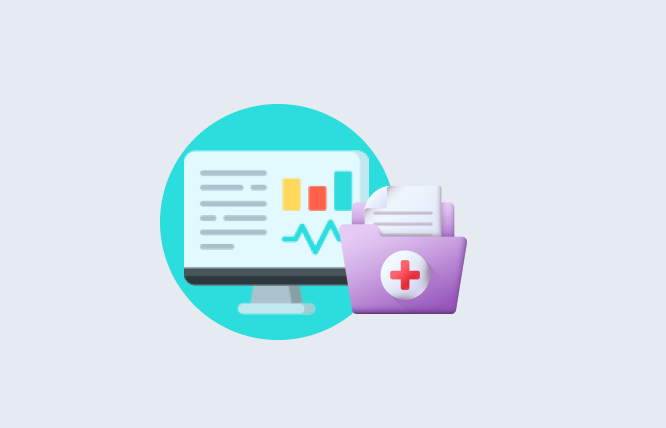Introduction
We’ll show you, step-by-step, how to build a Digital Transformation Roadmap for your business. Follow clear instructions use the right tools, and find the perfect tech partner (like Futurbyte!). Get ready to conquer the digital world!
Businesses that fail to adapt to the ever-changing digital world run the danger of being left behind. In order to build a resilient and creative company for the future, you need a digital transformation strategy. However, how do you even start? If you want to know how to maximise your digital transformation roadmap through an innovation strategy, this blog will show you the ropes.
What is Digital Transformation?
Digital transformation is all about adopting change and saying goodbye to old technologies. You may employ digital transformation in every facet of your business with this all-around method. This could mean making new apps for phones or using automation tools to change the way things are done inside the company. The end objective? To make a company that is more efficient, focused on customers, and data-driven.
Why is a Digital Transformation Roadmap Important?
A digital transformation roadmap typically outlines your destination (your digital vision) and the specific steps required to get there. This clarity minimises confusion, keeps your team aligned, and ensures you make the most of your resources.
Here’s How to Build Your Digital Transformation Roadmap (Step-by-Step Guide)
Step 1: Define Your Vision and Goals
Defining a clear digital vision or innovation strategy is the first step towards a successful journey.
Before you move forward – Ask common questions like:
What does your ideal future state look like?
Do you want to streamline operations with automation?
Do you need to enhance customer experience with a mobile app?
Or increase sales through a revamped e-commerce platform.
Once you have a vision, establish measurable goals that align with it. For example, if your vision is to improve customer satisfaction, a goal could be to increase your Net Promoter Score (NPS) by 10% within a year.
Step 2: Assess Your Current State
Before you make a plan, it’s important to know where you are now. Evaluate your current organisational tactics, processes, and technological architecture in extensive detail. Find out what’s working and what may need some modifications. Consider factors like:
- Technology Stack: What software and hardware are you currently using? Are they outdated or hindering efficiency?
- Business Processes: Are your current processes manual and time-consuming? Are there opportunities for automation or streamlining?
- Data Management: How effectively are you collecting, storing, and analysing data? Is your data secure and readily accessible?
Key Point: Reliable data from internal assessments is crucial for crafting a realistic and achievable roadmap.
Step 3: Identify Gaps and Opportunities
You may find gaps and improvement opportunities by comparing your present condition to your end goals. These voids provide chances to introduce novel methods and tools.
For instance, if your assessment revealed a lack of customer engagement with your website, a potential opportunity could be getting Progressive Web & App development services. PWAs offer app-like functionality without requiring installation, potentially boosting user engagement and conversions.
Now comes the main part: deciding on the tools and planning accordingly to lead where you need to be in the long run.
Step 4: Choose the Right Technologies and Tech Partner
The digital transformation roadmap acts as a high-level architecture for achieving your digital vision. It defines the desired functionality (goals) and technological components required to achieve it. However, selecting the right technologies (tools) is essential for successful implementation.
Here’s where a reliable technology partner comes in.
If you’re looking for a way to get specialised apps made to meet your demands, consider on-demand software development services. On-demand apps are perfect for businesses with specific needs or those looking to develop an innovative strategy.
Perhaps your vision involves streamlining internal processes. Therefore, only professional web development services may help you build robust web applications that automate tasks, improve data flow, and enhance employee productivity.
If your digital transformation roadmap involves revamping your online store, consider partnering with a Shopify Plus agency like FuturByte. They will leverage the power of the Shopify Plus platform to create a scalable and feature-rich online selling experience.
Step 5: Develop a Management Strategy
A successful roadmap requires a clear division of responsibilities and a well-defined execution plan.
This involves:
Team Formation – Assemble a team with the necessary skills and expertise to implement your chosen technologies. For ease, it is better to outsource the technical tasks.
Task Delegation – Allocate resources that will take ownership for each step of the roadmap, ensuring their team members understand the role and responsibilities.
Communication Channels – Keep a transparent communication channel where everyone can bounce ideas off each other for better outcomes.
Step 6: Allocate Resources
Now that you know the “who” and “how” of the digital transformation roadmap, it’s time to decide the “what.” This involves rationing the necessary resources, including:
Budget: Estimate the costs associated with technology accession, development, and implementation. Also, add in some budget for ongoing maintenance costs.
Technology Infrastructure: Make sure your current software and hardware infrastructure can support your selected technologies. Stay flexible when migrating to the cloud to improve current technological infrastructure.
Training: Allocate a certain amount for employee training and skill development to operate and maintain the new technologies.
Step 7: Implement Your Roadmap
Application Development and Modernisation:
- New Application Development: If your roadmap calls for building new applications using technologies like Magento, then consider partnering with Magento Programmer for better results.
- Legacy Application Modernisation: For outdated applications hindering your progress, you may consider an innovative strategy that is “containerisation” or “cloud migration”. These approaches can improve performance, security, and scalability.
Data Management and Migration
Data integration and transformation is a vital component of digital transformation. To ensure your data is error-free, consistent, and ready for analysis, you may automate this process with ETL/ELT (Extract, transform, and load) approaches.
Infrastructure Automation and Orchestration
Manually provisioning and configuring infrastructure can be time-consuming and error-prone. Make use of infrastructure automation tools; they will streamline complex tasks, leading to increased efficiency and reduced errors.
Application Deployment Strategies
Modern deployment approaches like continuous integration/continuous delivery (CI/CD) help automate the process of building, testing, and deploying applications. This leads to faster release cycles and smoother software updates.
Remember, a digital transformation roadmap is a living document. As your business evolves and industry trends shift, be prepared to reevaluate and adapt your roadmap to guarantee it remains relevant and drives continuous innovation.
Step 8: Monitor and Adapt (Track Progress and Adjust as Needed)
Your digital transformation roadmap can never be a one-time event; it’s a continuous journey. You’ll need to monitor progress and adapt your roadmap as needed.
You may set certain Key Performance Indicators (KPIs) to track your progress towards your digital vision goals. For instance, if your goal is to increase customer engagement, a relevant KPI could be website traffic or app downloads.
Regularly assess your KPIs to identify areas where your roadmap is delivering and areas that might require adjustments. Perhaps a particular technology isn’t yielding the expected results, or your target audience isn’t responding as anticipated.
Here’s how to effectively monitor and adapt your roadmap:
Schedule Regular Reviews
Set aside time for periodic reviews to analyse KPI data and discuss progress. These reviews can be weekly, monthly, or quarterly, depending on the complexity of your roadmap.
Embrace a “Test and Learn” Mentality
Don’t be afraid to experiment and try new things. Pilot programs and A/B testing will pinpoint the insights so you may adjust your innovative strategy accordingly.
Stay Agile and Flexible
Always be prepared to adapt your roadmap based on emerging technologies, changing customer needs, and industry trends.
Conclusion
In this comprehensive guide, we’ve analysed the key steps involved in formulating and executing a successful digital transformation roadmap.
We have stressed the significance of well-defined goals, teamwork, and a dedication to constant development in order to achieve success.
With the help of dependable technology partners like Futurbyte and the measures outlined below, your business may be prepared to succeed in the dynamic digital world.
Are you prepared to start your journey through a well-defined digital transformation roadmap? Get in contact with Futurbyte now so we can create a plan to help you succeed!
Frequently Asked Questions
The cost of your digital transformation roadmap depends on several factors, including:More complex goals will require more advanced technologies and resources, leading to higher costs.Larger organisations with intricate technology infrastructure may require more investment.Partnering with technology service providers like Futurbyte can incur additional costs.However, creating a roadmap is an essential first step that helps you estimate costs and resource allocation for successful digital transformation.
The timeframe for implementing your roadmap depends on the complexity of your goals and the chosen technologies. Simple goals with readily available solutions can be achieved faster, while more ambitious transformations take longer.Tip: Prioritise your goals and implement them in phases.
Several challenges can arise during digital transformation, including:Resistance to change: Employees may be hesitant to adopt new technologies or workflows. To address these concerns you will need to provide proper training and help them overcome this resistance.Data security concerns: Integration and migration of data require careful planning to ensure data security and compliance.Integration issues: Connecting new technologies with existing systems may present compatibility challenges. Choosing interoperable technologies can help minimise this issue.A well-defined digital transformation roadmap that considers potential hurdles paves the way for a smoother transformation process.
We track progress using clear goals, kind of like following a map on your road trip. If your goal is happy customers, we might track how many compliments you get (like good reviews on a restaurant!).
Have questions or feedback?
Get in touch with us and we‘l get back to you and help as soon as we can!




